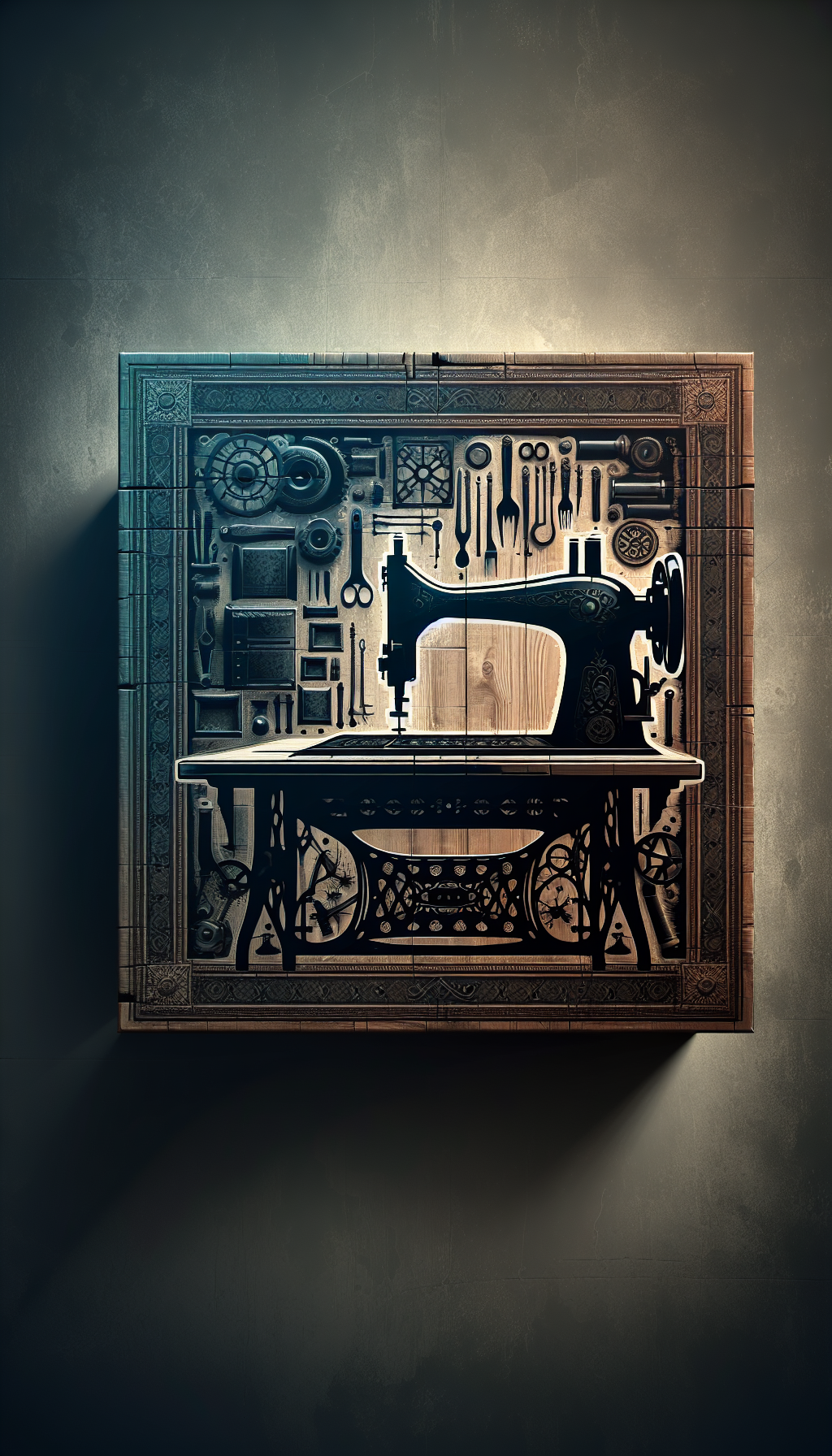Faces With Music By Gaylord Soli
Collectors and appraisers occasionally encounter works described as “Faces With Music” signed or attributed to Gaylord Soli. The phrase typically refers to compositions that interweave stylized human faces with musical instruments, notes, or staff lines—motifs popular across mid-century to late-20th-century decorative art and printmaking. Because the same title or theme can appear on original works, hand-pulled prints, and later reproductions, careful inspection is essential before forming an opinion of authenticity and value.
This guide lays out a structured approach: how to identify the medium and edition, what signatures and inscriptions may mean, how to evaluate condition, and how to build a realistic value range using comparables. It is written for appraisers, dealers, and estate professionals who need fast, defensible conclusions.
What Collectors Mean by “Faces With Music”
“Faces With Music” functions more like a descriptive title than a formal catalog raisonné entry. You might see it:
- As a penciled title on the lower left margin.
- As a printed title within the image or margin.
- On a gallery or frame-shop label affixed to the back.
- Used by sellers and estates to describe an artwork’s subject rather than a definitive title.
The visual language in pieces under this banner can vary, but commonly includes:
- Overlapping profiles or masks with musical iconography.
- Linear rhythms evoking sheet music or instrument strings.
- Palette spanning neutral charcoal/ink to vivid graphic color.
Because the title is generic, do not assume that every “Faces With Music” is by the same hand. Your task is to separate:
- Original works by the artist signed “Gaylord Soli.”
- Limited-edition prints (lithograph, serigraph, etching) hand-signed and numbered.
- Open-edition or poster reproductions bearing printed signatures.
- Later digital reproductions or print-on-demand items.
Establishing where your piece sits in that hierarchy is the single most important driver of value.
Identifying Medium, Edition, and Signature
Begin with a systematic visual and tactile inspection. Use a headlamp, 10x loupe, and raking light.
- Determine the image-making process
- Lithograph/serigraph (screenprint): At high magnification, serigraphs show discrete, sometimes velvety ink layers with edge build-up; lithographs show even, flat color fields without CMYK halftone rosettes.
- Etching/intaglio: Look for a palpable plate impression (plate mark) around the image, ink residue in paper texture, and slight embossment.
- Relief (linocut/woodcut): Ink sits atop the paper; edges of cut marks may be visible.
- Offset litho/poster: Under magnification you’ll see regular halftone dot patterns or rosettes; no plate mark.
- Giclée/inkjet: Pigment dots with variable size; dot pattern lacks offset regularity, edges may feather slightly into paper fibers.
- Examine the paper
- Hand-pulled prints: Often on rag or mould-made papers; may carry a watermark in the sheet or margin.
- Posters: Typically thinner, wood-pulp stock; bright white optical brighteners under UV are common in modern reproductions.
- Hand-made or heavier cotton papers suggest studio printmaking; check for deckled edges.
- Read the inscriptions
- Signature: Is it pencil or ink applied by hand, typically lower right? A printed signature is usually embedded in the image or margin with the same dot structure as the print.
- Edition: Look for fraction format (e.g., 27/250) lower left. “A/P,” “E.A.” (épreuve d’artiste), or “HC” (hors commerce) appear in artist proofs. Absence of numbering isn’t definitive but reduces the likelihood of a limited edition.
- Title and date: Often pencil-inscribed lower left or center. Confirm whether dating is part of the plate (printed) or applied by hand.
- Studio stamps: Blind stamps (embossed) from a printer or publisher add credibility.
- Compare signatures
- Gather multiple known examples of the artist’s signature if available from prior sales catalogs or documented holdings. Compare letter formation, slant, pressure, and placement. Note that signatures can evolve, but radical variance warrants caution.
- Be aware of printed signatures. A true hand-signature typically rests atop the paper with slight graphite sheen and irregular pressure visible under magnification.
- Check dimensions precisely
- Record image area, platemark (if present), and full sheet size. Variations can signal different editions or later trims. Poster reproductions often differ in size from limited-edition printings.
- Frame and mat clues
- 1960s–1980s original frames often used dry-mounting and acidic mats, which can cause mat-burn halos—consistent with age.
- Later reframing with modern archival mats is not a red flag, but retain any original labels.
Authentication and Attribution Workflow
Follow a layered evidence approach. A single piece of evidence is rarely conclusive; look for convergence.
- Trace provenance
- Record any inscriptions on the verso, including ownership notes, gallery stickers, frame shop tags, and price codes. These can anchor a timeframe and geography for the piece.
- Estate records, invoices, or exhibition handlists are particularly valuable. Photocopies or scans should be archived with the work.
- Build an internal dossier
- High-resolution photographs: overall front, detail shots of signature and edition, raking-light images to reveal surface texture, full verso.
- Measurements, materials, condition observations. Use consistent units and note where you measured.
- Cross-compare editions
- If you encounter multiple “Faces With Music” works, check whether plates or screens match precisely. Minor differences may indicate hand-variations or hand-coloring; major compositional changes suggest separate editions or wholly different works sharing a theme.
- Printer and publisher marks
- Blind stamps or printed notations identifying a workshop or publisher can be pivotal. Record the exact text or emblem description.
- If a workshop is known for certain processes, align that with your medium identification.
- Reasoned conclusion
- Express attribution confidence levels clearly: “By Gaylord Soli,” “Attributed to,” “In the manner of,” or “After.” Tie the label to evidence: signature traits, medium consistency, provenance, and market precedents.
Caution: Because “Faces With Music” is a descriptive title used broadly, avoid assuming authorship based solely on subject matter or a seller’s description.
Condition Grading and Conservation Considerations
Condition can swing value significantly, especially for graphic works. Inspect under natural and UV light.
Typical issues and impact:
- Light fading: Dyes and certain inks are vulnerable. Compare protected margins under the mat with exposed areas. Fading materially reduces value.
- Foxing: Rust-colored spots from fungal activity in acidic environments. Treatable by a qualified paper conservator; disclose whether spots are active or inactive.
- Mat burn/acid migration: Brown halos along mat windows. Reversible only to a point; replacing mats with buffered, lignin-free boards prevents progression.
- Paper toning: Overall yellowing; indicates poor storage. Stabilization is possible.
- Tears, creases, and losses: Edge tears are less severe if margins are generous; image-area damage is more serious. Professional mending should be documented.
- Staining: Moisture tidelines, adhesive stains from tape, and nicotine discoloration are common. Removal requires professional intervention.
- Cockling/waviness: Can arise from humidity or non-archival mounting. Dry-mount on foam board suggests past non-conservation framing.
Framing and glazing:
- UV-filtering acrylic or glass is recommended for display. Spacers to keep glazing off the sheet help prevent adhesion and condensation issues.
- Hinges should be Japanese tissue with reversible wheat starch paste. Avoid pressure-sensitive tapes.
When in doubt, consult a paper conservator for treatment estimates. Include those estimates in valuation notes; buyers consider both current condition and remediation costs.
Building a Value Range: Comps, Demand, and Timing
Value derives from medium, edition status, aesthetic quality, condition, size, provenance, and current demand.
- Establish the category
- Original work (painting, drawing, mixed media): Highest tier when authenticated and of strong visual quality.
- Limited-edition hand-pulled print, hand-signed/numbered: Mid to high tier depending on edition size and desirability.
- Open-edition offset or poster with printed signature: Decorative tier.
- Later digital reproduction: Lowest tier.
- Find relevant comparables
- Search past auction results, gallery catalogs, and dealer price archives for “Gaylord Soli” and for thematic matches (“faces,” “music,” “mask” compositions). Track sold prices, not asks.
- Note medium, edition size, signature status, dimensions, condition, and sale date. Adjust for differences rather than cherry-picking the highest comp.
- Regional and stylistic demand
- Works with musical themes can perform well in urban markets with active design and performing arts communities.
- Mid-century graphic aesthetics have cyclical demand; timing can affect outcomes.
- Edition size and placement
- Lower edition numbers do not inherently mean higher value, but smaller total edition sizes often do.
- Artist’s proofs can attract a premium if the market recognizes them; in other markets they are equivalent to numbered impressions.
- Friction costs
- Deduct for conservation needs, reframing, and shipping risks. A clean, ready-to-hang example can outperform a similar piece with visible issues by a wide margin.
- Selling channels
- Public auction: Transparent prices but variable hammer results.
- Dealer/private sale: Potentially higher net if the dealer has the right clientele.
- Online platforms: Broader audience; photos and condition disclosure must be rigorous to avoid returns.
Provide your valuation as a range with rationale, e.g., “$800–$1,200 retail replacement for a hand-signed serigraph, excellent condition, with documented provenance; $250–$400 for offset poster reproduction of the same image in good condition.”
Presenting, Packing, and Long-Term Care
For presentation and safe transit:
- Photography: Neutral daylight, parallel alignment, and color targets help establish accurate records. Include versos and label close-ups.
- Packing glazed works: Corner protectors, glassine over the face, bubble wrap with bubbles outward, rigid foam boards, and double-boxing for shipment. Mark “Do Not Lay Flat.”
- Unframed sheets: Interleave with acid-free glassine, keep flat in archival folders; avoid rolling if the paper is stiff or brittle.
Long-term care:
- Display away from direct sunlight and heat sources. Maintain stable humidity (40–55%) and temperature (18–22°C).
- Reassess mats and hinges every decade; papers and adhesives can degrade even in good environments.
Practical Checklist: “Faces With Music” by Gaylord Soli
Use this when inspecting and valuing a piece.
- Confirm the medium: hand-pulled print, painting/drawing, offset poster, or digital reproduction.
- Inspect signatures and inscriptions: pencil vs printed, placement, edition fraction, date, title.
- Check for workshop stamps or watermarks; note them verbatim.
- Measure image, platemark, and full sheet; record in cm and inches.
- Document condition: fading, foxing, mat burn, tears, stains, cockling; grade severity.
- Photograph front, details, raking light, and verso labels at high resolution.
- Capture provenance: invoices, labels, estate notes; scan and archive.
- Build comps: at least three recent, relevant sales; normalize for medium, size, and condition.
- Formulate a value range with a brief justification; note any conservation estimates.
- Recommend care: archival reframing, UV glazing, appropriate storage.
FAQ
Q: My piece says “Faces With Music” and has a signature that looks printed. Is it still valuable? A: Printed signatures typically indicate a reproduction or poster edition. These hold decorative value rather than fine-art print value. Condition and size still matter, but pricing should reflect the category.
Q: There is no edition number, but the signature appears to be in pencil. Could it be an artist’s proof? A: Possibly, but absence of numbering alone does not confirm proof status. Look for “A/P,” “E.A.,” or “Proof” notations, and seek corroborating evidence such as paper quality, printer stamps, and signature comparisons.
Q: How much does mat burn affect value? A: Mild mat burn confined to margins has a modest effect, especially if margins are generous and treatment is feasible. Mat burn intruding into the image area is more serious and should be reflected in a lower estimate and disclosed with photos.
Q: Can I safely clean surface dirt myself? A: Dry surface cleaning with a soft brush can be safe for intact, unflaking media. Avoid erasers or solvents. Any wet cleaning, stain reduction, or tape removal should be done by a qualified paper conservator.
Q: Is a later digital print of the same image ever collectible? A: It can be attractive decor and may sell reliably at modest prices, but collectors typically reserve higher budgets for original works and hand-pulled, limited-edition prints with clear authorship and documentation.
By approaching “Faces With Music” attributed to Gaylord Soli with disciplined examination, transparent documentation, and market-aware valuation, you’ll produce reliable appraisals that serve both collectors and sellers.




